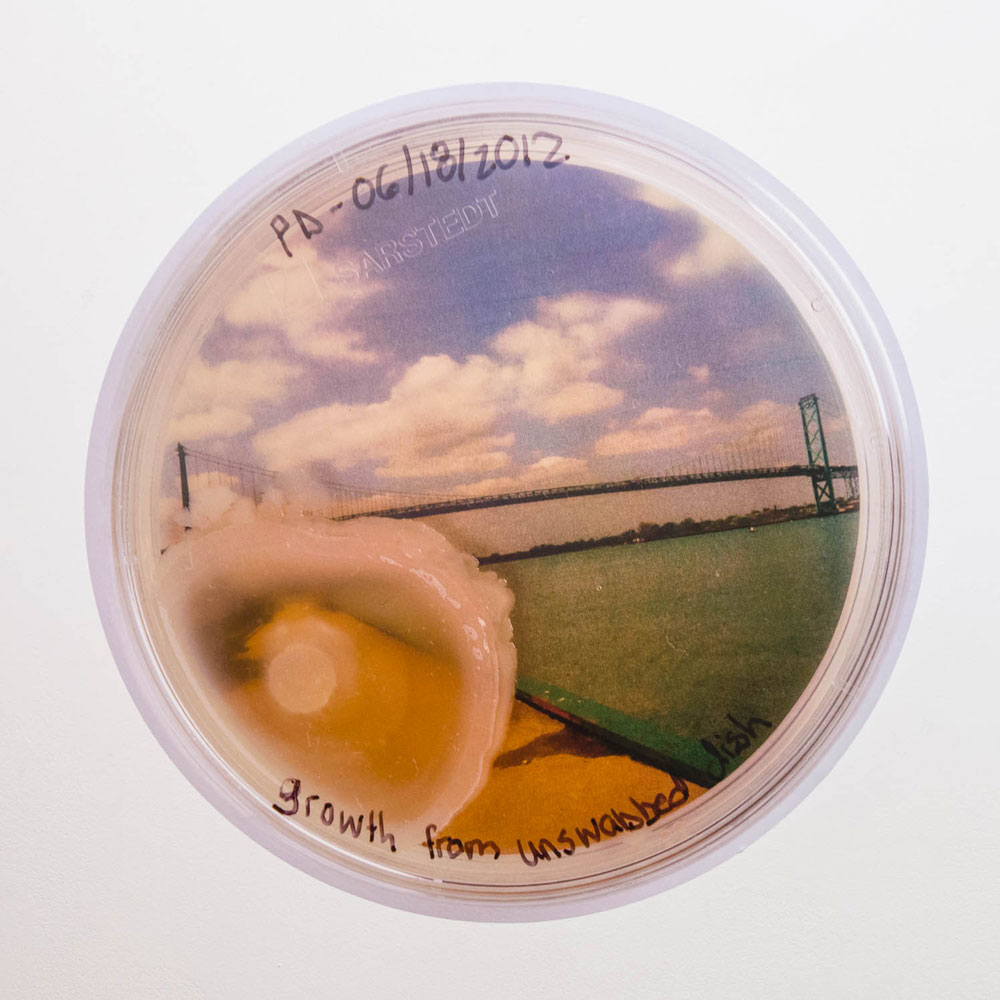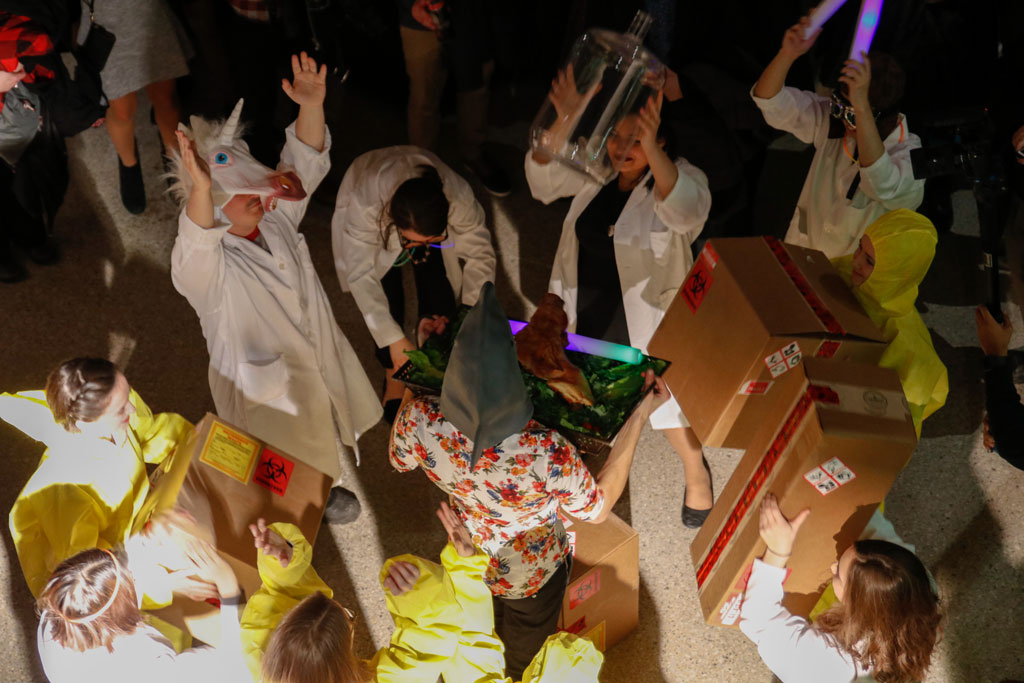 UWindsor associate professor Jennifer Willet christens the new School of Creative Arts during Feasting the Lab on Jan. 20, 2018.
UWindsor associate professor Jennifer Willet christens the new School of Creative Arts during Feasting the Lab on Jan. 20, 2018.
Jennifer Willet's art may evoke mixed feelings. And that's the point.
The associate professor at the University of Windsor specializes in bioart, a form of art that fuses scientific processes and materials in a gallery setting.
"It most often involves living, sometimes recently deceased biological material," Dr. Willet explained. "One of the things that really differentiates bioart from other art forms is the bioethics of the media are intrinsically present in the work of the artist and the viewer."
This was the case with one of Willet's early projects, Bioteknica. It started as a fictitious bio-engineering corporation where artists created and sold Teratomas based on consumer demand.
But when the University of Western Australia's SymbioticA invited Willet and her team to produce the cancerous growth containing tissues like hair, skin, and nervous systems, she said it "was a terrifying moment as an artist.
"There's so much safety when you only work in the realm of representation," Willet said. "I had to confront what my limits were as an artist and it was an ethical and conceptual shift which was really hard and really exciting."
Bioteknica was comprised of more than 20 exhibitions and performances, 25 public lectures and six chapter publications.

But not all her work summons such divisive responses.
Willet followed her nose to create the Windsor Yeast bioart project when she moved to Walkerville.
Armed with a camera and a yeast collection kit, Willet travelled across the city and collected microbial samples and photographs.
"When I moved to Windsor I noticed the very distinct smell of yeast from the distillation process in Walkerville," Willet said, adding it conjured up memories of making beer and wine with her father in the basement of her childhood home.
"On one hand, it was really scary because those particles are going in your nose, but on the other hand, it gave me this feeling of being at home with my dad."
The samples were then grown in Petri dishes in Willet's lab and backed with the photographs where the samples were collected.
The community has always been a vital component of Willet's work, and with the Incubator's home in the new School of Creative Arts, it will be even more prominently featured.
Walking through the grand oak doors of the late-19th-century Romanesque structure, visitors are greeted by Willet's Incubator laboratory, separated only by a glass wall.
"One of the things this lab has that other labs don't is an aesthetic," Willet said. "We have a chandelier hanging in the centre of our lab and it asks people to ask themselves, 'why do labs look like they do?'"
The entire lab is wired for video and sound, so those walking by in the atrium can be immersed in the work.
"We have a camera mounted in the ceiling, so we can do cooking show-style shots and do live streams all over the world," Willet said.
"My goal is to do these live multimedia video performances that could be shot out over the Internet into galleries, museums or a classroom."
Soon to be certified a biosafety level two lab, Incubator will be able to work with substances that can cause mild harm to humans and human by-products.
But before the lab is certified, Willet hosted an event to christen the new space.
"Feasting the Lab was a project where we could go in and do all the things in the lab you're not allowed to do," she said.
"We threw a party and were barefoot, drank alcohol and really whooped it up."

Partygoers celebrate during Feasting the Lab on January 20.
Another project that will involve many players from the local community and around the world is the Invasive Species Fishing Trip scheduled for 2019.
Willet said artists and scientists will go fishing for invasive species and then use the catch for art, research, and a fish fry.
"We'll fish for zebra mussels, carp, sea lamprey and half of it will go into the lab or studio," Willet explained. "The other half we'll use for a fish fry because a lot of these are considered delicacies from where they originated."
She said the project will bring together scientists, artists and social scientists and humanities-based researchers.
Willet was inducted into the Royal Society of Canada’s College of New Scholars, Artists and Scientists last year for being a leading artist and curator in the international bioart community.
While the emotional questions brought about by the art is important to Willet, she said it's the vitality and joy she experiences from bioart that she enjoys most.
"I get a wonderful feeling from being around plants, animals and cells," Willet said.
"It makes me feel alive."
For more information about Willet and her bioart, visit www.incubatorartlab.com.
Dylan Kristy
